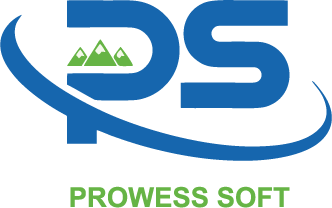Blogs
MuleSoft + Salesforce Beyond Integration
- February 13, 2023
- Others
No matter what business you are in (whether small, medium, or large), integrating internal business processes with third party platforms and cloud-based applications is crucial for business growth. Essentially, the small and medium trades call for integration solutions that offer scalability and flexibility to achieve high performance and ROI. However, since small and medium enterprises need to focus more on core business developments, managing integrations with a separate team become inefficient and a budget blow. Sometimes SMBs opt for custom integrations, which restricts business needs adaptability in the long run as it is challenging to make changes in custom codes. Similar to any other business, SMBs tend to focus totally on data and excellent customer service, which are the most valued business possessions across all domains. Data plays arguably a vital role for companies to make decisions, grow and achieve precision. An example to understand the part of data is the covid-19 pandemic wherein the healthcare providers record necessary patient data and gauge the complete health scenario of any patient. Similarly, customer data fed on a food delivery app helps the providers understand the customer’s interest, and accordingly, the food feeds and offers are provided. Every business has to follow specific government policies & compliance (like HIPAA in healthcare) and economic indicators to leverage any customer data. For this, it is essential to securely connect business data with external platforms to drive meaningful insights. For some reason, this data is siloed, dispersed between different systems, and continuously increasing, posing a challenge of integration, analysis, or visualization. This is where MuleSoft and Salesforce integration can help understand, unlocking, and connect all your data.
Understanding the MuleSoft integration through a scenario
Let us consider a situation where a clothing and jewellery provider is looking to introduce new products and efficiently deliver excellent customer experience and product delivery through digital & in-store mediums. Creating a new e-commerce digital strategy aims to directly engage with customers (retailers, distributors, and buyers) and deliver a never before buying experience. To achieve this, the provider company needs to connect various tools such as Salesforce commerce cloud and other third-party systems to its internal ERP platform. To achieve this, the company will need to:
- Build an IT team to create custom code path for different integrations
- Consider security during integration
- Revisit the staffing constraints for better customer experience
- Appoint an employee who can understand their ERP system fields, define requirements of the new platform, unlock back-office data and build an integration for each
- Be ready with additional integrations if in case the system changes as the business progress
- Create a system that automates the manual order management
Instead of getting into the tedious process of creating custom code for each integration, the company opted for MuleSoft’s API led connectivity approach to link, synchronize and automate data between the three platforms (Salesforce, internal ERP and another third party). The reason for choosing the API-led approach is that the traditional application integration method through custom code is time-consuming to meet the business demands. The company started with building a customer API to unlock data from various systems, combine the data and represent it in an accessible setup without compromising the security and governance. This integration approach increases the productivity, agility, and speed of personalized service and issue resolution. Some of the many benefits that the company achieved through the MuleSoft API led approach includes:
- A single view of all the customer data that was siloed. For example, customer data stored on Salesforce cloud, ERP, and third party (distributor system and payment provider) are all connected and displayed in a single view.
- This customer view also includes previous customer interaction data that helps agents with automated work orders, issues, cases, and required service actions. This benefits in improving agent productivity and reducing staffing constraints too
- The APIs can be easily updated, which means if there are any changes in the source or destination systems, we do not need to update every integration point.
- The reusable APIs engage customers across various channels.
- No need to appoint an employee with detailed knowledge of the internal ERP system. Anyone with the right understanding can access the correct information.
- Better collaboration between provider, distributor, retailer, and other third-party supply-side platforms
The company created a 360 view of the customer with MuleSoft API led integration. They achieved efficacy, ensured better order management, and could focus on providing personalized product & customer experience as they have access to all information.
Leveraging Salesforce and MuleSoft together
To unlock digital transformation and integrating data across the enterprise, MuleSoft is the go-to platform. It not only connects data, application, or any system but transforms the new platform into a high performance and cost-effective solution. At ProwessSoft, we have witnessed how our customers who have adopted Salesforce (Sales, Marketing, and service) clouds faced the continuous challenge of sourcing and leveraging data. This is the same value-added data that is required to enhance customer experience and cross-selling opportunities. With our MuleSoft Salesforce integration experience, we were able to fetch, connect, and act on external data to build a mature new platform. Adopting to a MuleSoft API led model, the data across the system remains uncoupled. The data transformation and adhering to protocols remain compressed and the data change events are excellently managed no matter where they are located- on cloud or data center.
The Way Forward
MuleSoft-Salesforce integration offers a framework for future applications that simplify the development process, avoid duplication of work, leverage APIs’ reusability, and make connected customer experience a reality. For immaculate up-gradation and integration of MuleSoft with Salesforce, reach ProwessSoft for consultation. Our specialists will help you draw the maximum integration advantages, especially the ones that boost your business.
